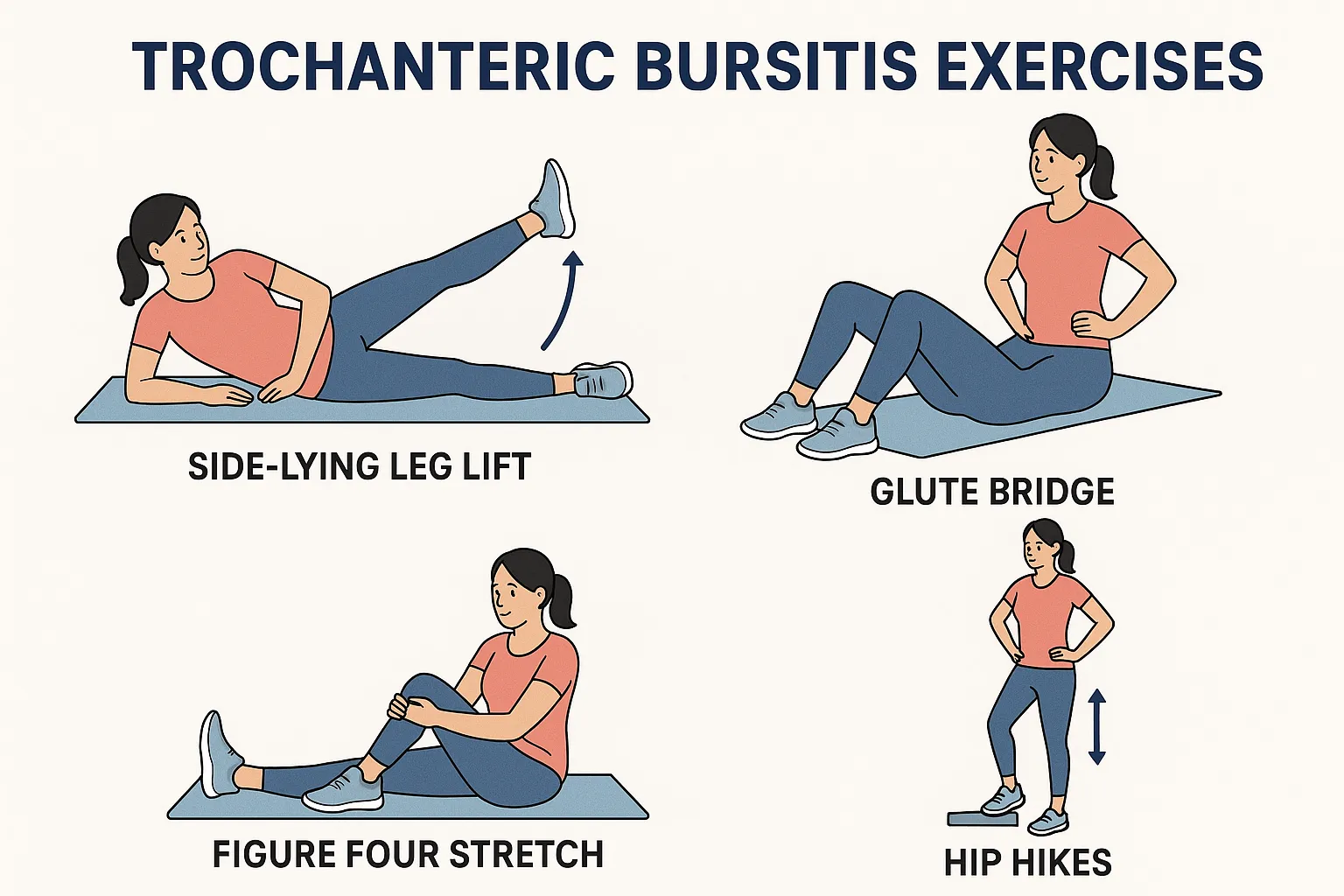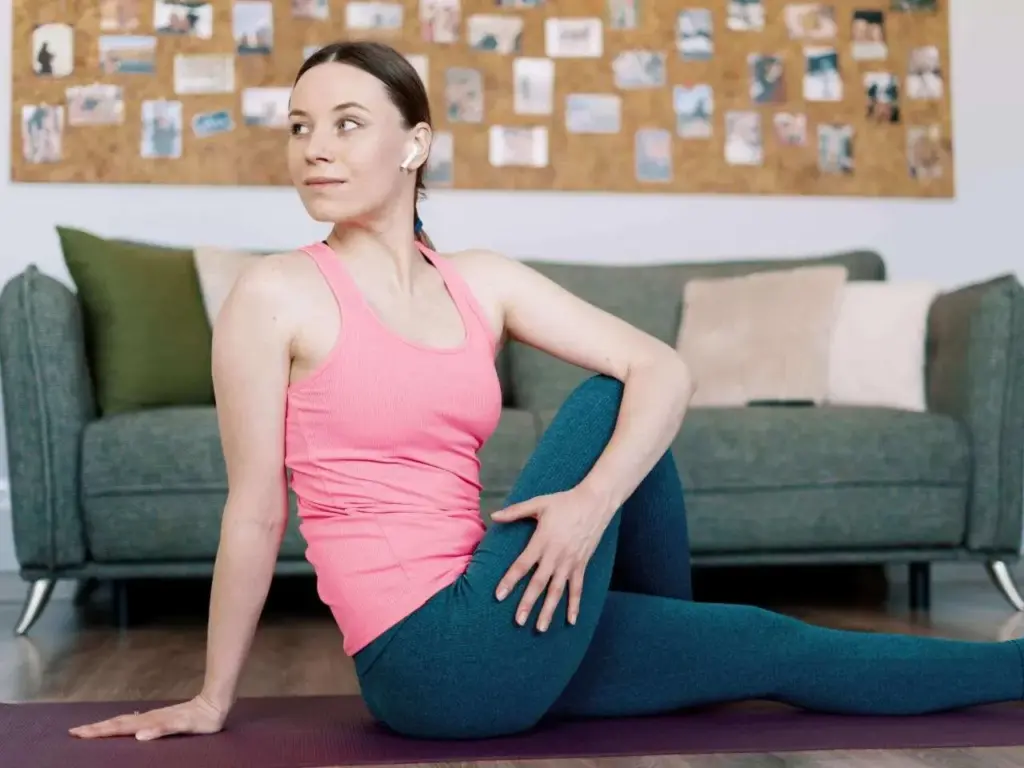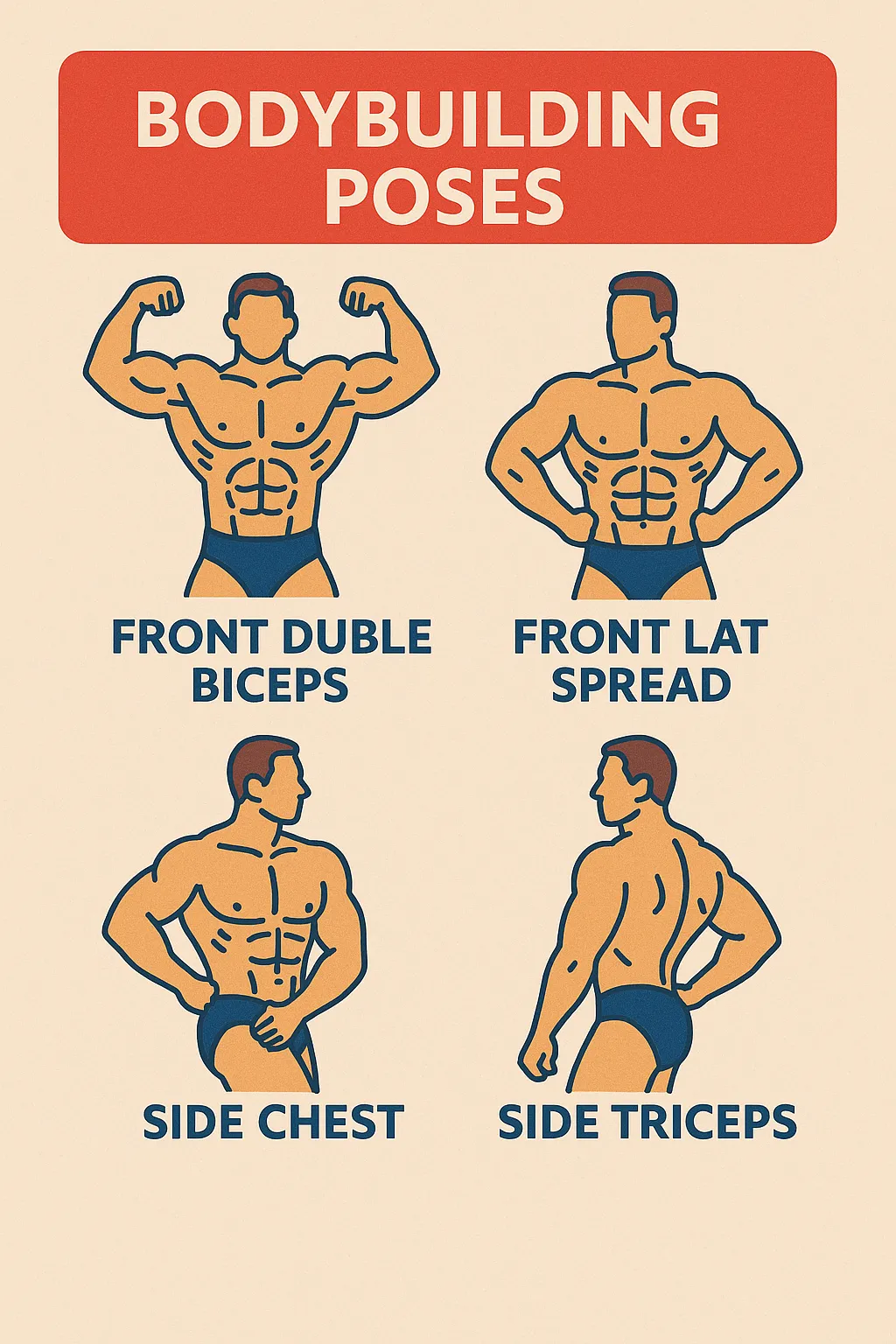Often known as trochanteric bursitis, greater trochanter pain syndrome (GTPS) is a hip condition that can be quite painful. For those suffering from this disease, it is vital to understand it and know how to control it using exercise.
This article will cover the definition of trochanteric bursitis, its signs and symptoms, its causes, and useful pain-relieving exercises.

What is Trochanteric Bursitis?
Trochanteric bursitis develops when the trochanteric bursa, a fluid-filled sac near the greater trochanter of the thigh bone, becomes irritated or inflamed. This bursa helps to reduce friction between the tendons and the bone during movement. When it gets inflamed, it can make the outer thigh and hip.
Who Is Affected?
This condition is more common in women and usually affects those over 40. People who are physically active or who hold occupations that call for repeated hip movement are also more susceptible.
Symptoms of Trochanteric Bursitis
Common indicators and symptoms are:
• Pain and sensitivity around the outside of the hip
• Pain running down the outside of the thigh
• The uncomfortable side-lying position affected
• More discomfort while extended sitting, leg crossings, and stair climbing
• A snapping noise during particular activities
A healthcare professional should be consulted if you experience any of these symptoms since only then can one make a correct diagnosis.
Causes of Trochanteric Bursitis
Among them are several causes for trochanteric bursa irritation:
• Repeated hip movements
• Weakness in hip muscles
• Tightness in the iliotibial (IT) band and other nearby muscles
• Past hip operations or injuries
• Disorders like tendinitis or arthritis
Trochanteric Bursitis Treatment
The positive development is that conservative therapies are often successful in controlling trochanteric bursitis. Here are some tried-and-true techniques:
Rest for a While
Avoid things that aggravate the pain, such as high-impact workouts or lying on the affected side.
Ice Application
Apply ice to the injured area for 15 to 20 minutes every few hours to assist in lowering swelling and discomfort.
Anti-Inflammatory Drugs
Over-the-counter drugs like naproxen or ibuprofen can lessen pain and inflammation.
Physical Therapy
An organised fitness regimen can be very helpful. Hip-strengthening and strengthening exercises are essential for healing.
Exercises That Work Well for Trochanteric Bursitis
Trochanteric bursitis symptoms can be greatly managed and reduced by incorporating certain exercises. We suggest the following exercises:
Stretching Activities
Stretching is essential for increasing the range of motion and easing hip-related muscle tension.
Stretching the Piriformis
The piriformis muscle, which is the target of this stretch, may cause hip pain.
• Maintain a straight back while sitting in a chair.
• Cross the afflicted leg over the knee on the other side.
• Pull your knee gently in the direction of your opposing shoulder until it feels stretched.
• Repeat two to three times on each leg after holding for 30 seconds.
Stretching the Iliotibial (IT) Band
The IT band can get tight as it runs along the outside of your thigh.
Easy IT Band Stretch:
• Cross your legs and stand.
• Until the outer thigh feels stretched, lean toward the side of the afflicted hip.
• Wait 30 seconds.
Advanced Stretch for IT Bands:
• Place a foam roller beneath your hip while lying on the side that is afflicted.
• For 30 seconds, move from your knee to your hip while rolling your hip over the foam roller.
Exercises to Build Strength
For recovery, it is essential to strengthen the muscles surrounding the hip.
Isometric Hip Exercises
Without moving, these exercises help build stronger hip muscles.
• Place your leg against a wall while lying on your side.
• Your leg should be pushed against the wall without moving.
• Repeat five times while holding for five to ten seconds.
Raise Your Legs Straight
This exercise strengthens the hip and buttock muscles.
• With one leg straight and one knee bent, lie on your back.
• Slowly raise the straight leg to the level of the bent knee by contracting your thigh muscles.
• After five seconds of holding, lower yourself back down. On each leg, repeat ten times.
Bridges
Bridges help to strengthen the lower back and gluteal muscles.
• With your feet flat on the floor and your knees bent, lie on your back.
• Raise your hips off the floor and contract your abdominal muscles.
• After five seconds of holding, gradually lower yourself back down. Do this ten to fifteen times.

General Exercise Advice
• Get warmed up: To avoid injury, always warm up before beginning any exercise.
• Cool Down: To lessen soreness, apply ice to the hip for five to ten minutes after working out.
• Adjust as necessary: Avoid or alter an exercise if it hurts.
When to Get Medical Assistance
See your doctor if your symptoms worsen even after you’ve started exercising or if you develop new ones like numbness or excruciating pain. They might recommend extra therapies like injections or physical therapy.
Although trochanteric bursitis can be excruciating, you can effectively manage your symptoms with the correct exercises and attention. Before starting any new exercise program, keep in mind to start out slowly, pay attention to your body, and get medical advice.
You can encourage healing and resume your regular activities without experiencing any pain by including strengthening and stretching exercises in your regimen.







